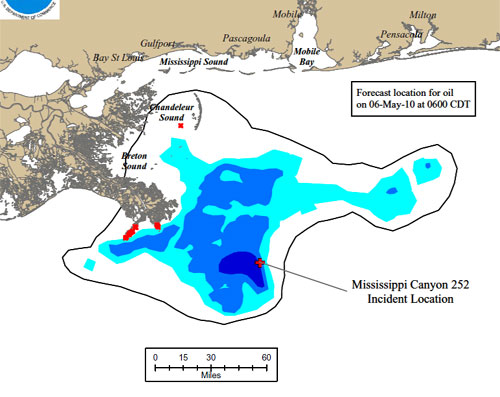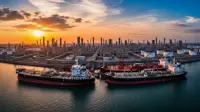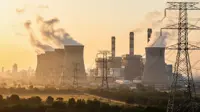Gulf of Mexico oil spill: BP plugs one leak, two more to go
06 May 2010
British Petroleum (BP) yesterday said that it had plugged the oil flow from one of the three leak points on its damaged oil well in the Gulf of Mexico but has still to cap two more leaks that have been spewing 200,000 gallons of oil each day since the past 15 days.
 "We are continuing to do all we can to stop the flow of oil from the well and also attack and capture the spilled oil offshore," said Tony Hayward, BP Group chief executive. "However, it is also vital that we work together with government and potentially impacted communities to protect the shoreline from any impact of the spill. We hope these grants will support the effective deployment of pre-prepared response plans in each state." he added.
"We are continuing to do all we can to stop the flow of oil from the well and also attack and capture the spilled oil offshore," said Tony Hayward, BP Group chief executive. "However, it is also vital that we work together with government and potentially impacted communities to protect the shoreline from any impact of the spill. We hope these grants will support the effective deployment of pre-prepared response plans in each state." he added.
 Using remotely operated submersible robots from a ship on the surface of the sea, BP engineers were able to install a valve on the end of a broken drill pipe, one of the three points from which oil was leaking.
Using remotely operated submersible robots from a ship on the surface of the sea, BP engineers were able to install a valve on the end of a broken drill pipe, one of the three points from which oil was leaking.
The robots first cut the end of the pipe to leave a clean end and the valve, weighing over half a ton, was placed in position on the seabed, securely joining the valve to the broken drill pipe and then closed it, shutting off the flow from that pipe.
Having capped one leak, BP engineers have shifted their focus to cap the other two, which are the worst of the leaks.
BP has hired Wild Well Control, which has built two 100-ton containment domes that will be put on a barge tomorrow and haul the gigantic four storey high dome to the site of the leak that has been gushing oil from 5, 000 feet below on the seabed.
The problem with the containment domes is that they have never been tried at this depth, which has extreme water pressure.
 |
| Winds are forecast to be light (5 kts) and variable continuing through Thursday morning. S/SE winds at 10 kts are expected to resume again Thursday afternoon/evening and continue throughFriday. The Mississippi Delta, Breton Sound and Chandeleur Sound continue to be threatened by shoreline contacts throughout the forecast period. All three ocean models show a westward current developing south of the Delta transporting oil to the west of the Delta. Image: NOAA |
The 15-day old British Petroleum (BP) oil spill in the Gulf of Mexico caused by the explosion of the Deepwater Horizon rig is potentially becoming the worst offshore environment disaster ever and is likely to eclipse the Exxon Valdez oil spill of 1989, which till now was considered the worst oil disaster in US history. (See: BP caught in the sludge of potentially worst oil disaster in US history)
The spill occurred after an explosion followed by fire on the Deepwater Horizon drilling rig, owned by Transocean Ltd. operated by BP, which killed 11 workers.
The rig capsized and sank two days later, and the oil began to seep into coastal waters, threatening beaches, marshes, marine mammals, fishing grounds and recreational activities among others.
BP has already deployed 180,000 feet of boom already in the water, an additional 300,000 feet is in the process of being deployed, with more on the way to protect and clean the shorelines of Louisiana, Mississippi, Alabama and Florida.
London-based BP said today that it has a supply of boom and other resources on hand to cover the next seven to ten days, and has put in place a supply chain that should enable it to deliver additional supplies as needs arise.






















